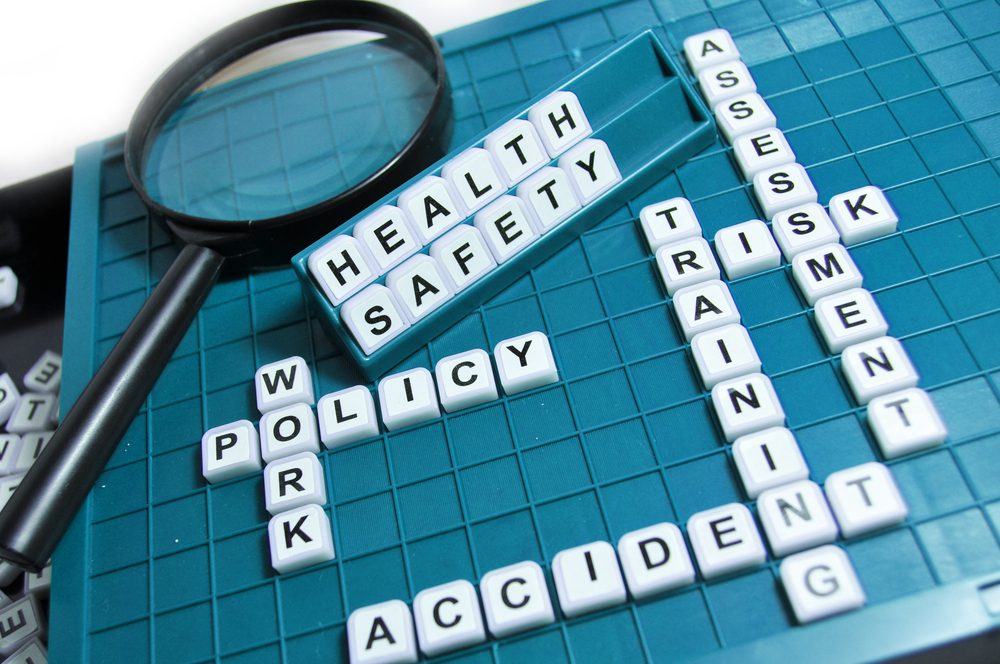Protect Your Business With Spire Safety Workplace Risk Assessments in Australia
In Australia, workplace safety is a top priority, and it’s essential to effectively manage WHS (Work Health and Safety) risks. As a person conducting a business or undertaking (PCBU), designer, manufacturer, importer, supplier, installer of plant, substance, or structure, or an officer such as a company director, you have a legal obligation to manage WHS risks.
One way to manage WHS risks is by following a step-by-step process. This process includes identifying hazards, assessing risks, controlling risks, and reviewing control measures regularly. By implementing risk management, you can respond to changes and improve your business. It helps you to eliminate or control risks in your workplace, resulting in several benefits, including:
- Preventing workplace injuries and illnesses: By identifying and eliminating potential hazards, you can create a safe working environment for your employees, reducing the risk of accidents and injuries.
- Improving the health, well-being, and capacity of your workers: A safe and healthy workplace promotes employee well-being, leading to increased productivity and higher-quality work.
- Improving quality and productivity of work: By reducing workplace hazards and creating a safe working environment, you can enhance the overall quality and productivity of work.
Therefore, it’s crucial to manage WHS risks effectively to ensure the safety and well-being of your employees while promoting a productive and healthy workplace.
WHS Duties
If you are a PCBU, you must eliminate the risks in the workplace. If that is not reasonably practicable, you must minimise the risks to the greatest extent possible. As part of your legal obligation, you must also consult with your workers and health and safety representatives (HSRs), if you have them, about health and safety issues that may affect them directly. This consultation ensures that everyone involved knows the risks and takes steps to manage them.
It’s also essential to note that workers and other individuals in the workplace have their own WHS duties. They must take reasonable care for their own health and safety and the safety of others in the workplace.
It’s important to remember that a person can have more than one WHS duty, and more than one person can simultaneously have the same WHS duty. This shared responsibility means that everyone involved has a crucial role to play in managing WHS risks and ensuring a safe and healthy workplace.
By effectively managing WHS risks, you can create a safe and productive work environment that benefits everyone involved.
When To Use Risk Management In The Workplace
Effective risk management is an ongoing process that requires regular review and assessment. It’s essential to keep in mind that workplace risks can change over time, and new risks can emerge as your business grows and evolves.
One critical aspect of risk management is continually monitoring and evaluating potential workplace changes. This means considering risk management strategies again when significant changes occur within your business, such as starting a new venture, altering your business structure, or purchasing new equipment.
Starting a new business can introduce several new risks that you may not have considered before, such as changes in regulations, increased competition, and uncertain financial conditions. Similarly, changing your business structure, such as merging with another company, can introduce new risks that need to be identified and assessed.
Purchasing new equipment can also present new risks that must be evaluated. For example, new machinery or technology may require new safety measures, and your employees may require additional training.
Regularly revisiting your risk management strategies can help you stay on top of potential hazards and make necessary changes to minimise or eliminate risks. It also helps you to identify areas where you can improve and enhance your risk management approach, ensuring that your workplace remains a safe and healthy environment for your employees.
Managing WHS risks is an ongoing process that involves working through the risk management steps whenever necessary. Here are some instances when these steps should be taken:
- Designing products, processes, or places for work
- Planning to improve productivity or reduce costs
- When required by the WHS regulations for specific hazards.
- Expanding or purchasing an existing business
- Starting a new business
- Responding to concerns raised by workers, health and safety representatives, or others at the workplace
- Responding to workplace incidents, even if they have caused no injury
- Changing work practices, procedures, or the work environment
- Working with a new commissioner of your services
- Working with a new supplier
- Using new substances
- New information about workplace risks becomes available
- Changing the organizational structure or job roles
- Introducing new or returning workers to the workplace
- Purchasing new or used equipment
Workplace risk assessment in Australia is crucial to ensuring employees’ safety, security and well-being. It involves assessing potential hazards that could cause injury or illness to workers and taking steps to reduce or eliminate them. This article aims to examine the importance of workplace risk assessment in Australia, as well as how it can be carried out effectively.
This article will begin by providing an overview of workplace risk assessment, including its legal requirements and key principles. Furthermore, it will discuss research on best practices for conducting successful assessments at all organisational levels. Finally, implications for employers and employees alike will be discussed in order to provide an overall picture of how workplace assessments should be conducted in Australia.
We offer these courses in local workplace environments as well as through digital streaming services in Capital cities and also rural locations in between.
Definition
Risk assessment in the workplace is an important part of any organisation’s safety management system. It involves assessing potential hazards and determining how they can be managed to minimise risk, as well as identifying ways to mitigate harm if a hazard does exist.
With workplaces becoming increasingly complex with new technologies, materials and processes being introduced on a regular basis, it is essential that all employers understand the importance of conducting comprehensive workplace risk assessments in Australia.
Workplace risk assessments involve identifying potential risks associated with particular activities or tasks; evaluating these risks by considering scenarios where they may arise; establishing control measures; monitoring and reviewing these controls over time; and informing workers of their rights and responsibilities regarding the risks that have been identified.
Legislation And Regulations
In Australia, employers have a legal obligation to ensure the health and safety of their employees and others in the workplace. Several legislative and regulatory requirements must be followed when conducting risk assessments. These include:
- Work Health and Safety (WHS) Act: The WHS Act outlines the legal framework for ensuring the health and safety of workers in Australia. Employers must comply with the provisions of the Act, which includes conducting risk assessments.
- Codes of Practice: Codes of Practice provide guidance on how to manage risks in specific areas. Employers must take into account any relevant codes of practice when conducting risk assessments.
- Australian Standards: Australian Standards provide technical guidance and requirements for specific types of equipment, processes, or activities. Employers must follow relevant Australian Standards when conducting risk assessments.
- Hazardous Chemicals Regulations: Employers who use, handle, or store hazardous chemicals must comply with the Hazardous Chemicals Regulations. This includes conducting risk assessments and implementing control measures to manage the risks associated with hazardous chemicals.
- Workplace Injury Rehabilitation and Compensation Act: Employers must also comply with the Workplace Injury Rehabilitation and Compensation Act, which outlines the legal framework for managing workplace injuries and workers’ compensation.
By following these legislative and regulatory requirements, employers can ensure that their risk assessments are conducted effectively and potential hazards are identified and managed appropriately. This helps to create a safe and healthy work environment for all employees and others in the workplace.
Hazard Identification
When conducting a workplace risk assessment, hazard identification is essential in order to determine the potential risks associated with certain activities and environments. This involves evaluating any existing conditions or practices that may be hazardous and identifying new hazards that could arise in the future. Employers should use an appropriate workplace risk assessment form when undertaking this process so they can record their findings and develop suitable control measures if necessary.
The importance of thorough risk assessment and management cannot be underestimated when it comes to preventing accidents, illnesses and other incidents from occurring in the workplace. It is also important for employers to ensure that all relevant staff members are informed about the identified hazards and understand how these risks can be effectively managed.
By taking proactive steps such as providing safety training, setting up safe systems of work and organizing regular reviews of current health and safety policies, employers can help create a safer working environment for everyone involved.
It is also worth noting that employees have an obligation under occupational health and safety regulations to take reasonable care of themselves while at work – which includes avoiding any unnecessary risks or hazards where possible. By ensuring everyone understands their responsibilities in relation to managing workplace safety, organisations can better protect both their staff members and customers alike.
Risk Analysis And Evaluation
Once a thorough hazard identification has occurred, it is important to analyse and evaluate the risks associated with each hazard. This involves assessing how likely certain events are to occur as well as their potential severity in terms of injury or harm if they do. Employers must consider all potential outcomes in order to develop an appropriate risk management plan that will help protect everyone involved from any foreseeable dangers.
As part of this process, employers should consult with workers who have knowledge about specific tasks or activities so that any identified risks can be properly assessed and managed. It may also be necessary for organisations to engage external experts such as health and safety consultants in order to ensure that all relevant legislation is adhered to and suitable control measures are implemented where required.
Ultimately, by taking effective steps towards reducing workplace risks through robust analysis and evaluation, employers can create a healthier and safer environment for employees, customers and other stakeholders alike.
Risk Control Measures
Having undertaken a thorough risk analysis and evaluation process, it is now necessary to implement an appropriate range of control measures in order to reduce or eliminate the risks identified. This can involve engineering controls such as guardrails, machine guarding and ventilation systems; administrative processes including policies and procedures, as well as personal protective equipment (PPE). In Australia, employers must ensure that all workers have access to suitable PPE at no cost while also providing training on how to use any provided items safely.
It is essential for organisations to continually monitor their safety programs in order to identify any potential shortfalls or changes that may need addressing. Regular reviews should be conducted with stakeholders such as employees, contractors and customers so that everyone has the opportunity to provide feedback about current practices and suggest new ways of improving workplace safety.
By doing this, businesses can help foster a culture of care and responsibility towards health and well-being within their organisation – ultimately creating safer workplaces for everyone involved.
Emergency Planning
In addition to risk control measures, organisations need to have an appropriate emergency plan in place. Effective emergency response should include strategies and procedures that will help minimise the impact of any potential hazards or incidents on staff and customers. This includes outlining roles and responsibilities, detailing who has access to what information, as well as identifying resources such as contact numbers and evacuation points.
Organisations are also required by law to ensure their emergency plans meet certain criteria – including having a designated duty holder responsible for coordinating emergency responses; allocating sufficient resources towards prevention efforts; planning for contingencies and disruptions; providing adequate training opportunities; and conducting regular drills and reviews. By taking these steps, businesses can protect themselves against unforeseen risks while also ensuring they remain compliant with relevant regulations.
Consultation With Stakeholders
Organisations need to consult with their stakeholders when conducting workplace risk assessments. This ensures that all relevant parties are involved in the process and can provide meaningful feedback on potential hazards, risks and solutions. Stakeholders should include employees, employers, customers/clients, suppliers and anyone else who may be affected by an incident or hazard at work.
The consultation process should involve clear communication between these groups so that everyone understands their roles and responsibilities as well as any new procedures implemented as a result of the assessment.
It is also important for stakeholders to have access to accurate information about the risks identified in order to make informed decisions about how best to reduce them. Organisations will be better equipped to identify and manage risks effectively by engaging with stakeholders throughout this process while ensuring compliance with applicable laws and regulations.
Monitoring And Reviewing Risk Levels
Once the risk assessment has been completed, and stakeholders have been consulted, it is important to regularly monitor and review risks as part of an ongoing process.
This will ensure that any changes in workplace conditions or processes are adequately addressed, and appropriate controls are put in place to mitigate existing hazards. Regular reviews should also identify new potential risks that may not have been present during the initial assessment.
Organisations must keep up-to-date records on all identified risks, including those previously assessed but no longer pose a threat. These documents should include detailed information on each hazard’s likelihood, severity and control measures so they can be revisited when needed.
To further protect workers from harm, employers must continuously assess their procedures and implement necessary improvements if required. By following these steps, organisations can stay compliant with applicable laws while ensuring employee safety remains a priority throughout all operations.
Reporting Requirements
Employers need to report any identified risks and the control measures that have been implemented effectively. This will ensure a consistent approach to managing workplace safety in Australia and provide evidence of compliance with relevant laws.
The Work Health and Safety Act 2011 (WHS) requires all organisations to keep records on their risk assessments, which must be made available upon request from an authorised individual or body such as the local regulator or court. Furthermore, it is mandatory for companies working in certain industries to also submit regular reports detailing their efforts towards protecting employees. These include mining operations, construction sites, manufacturing facilities and hazardous waste management services.
In addition to this legal requirement, businesses should strive to maintain open channels of communication between managers and workers when it comes to identifying hazards in the workplace. By involving staff in this process, employers can gain valuable insight into potential risks they may not otherwise see and respond proactively before costly accidents occur.
Regular check-ins between supervisors and colleagues can help ensure everyone is aware of current conditions within the organisation so unexpected issues can be quickly addressed before they become more serious problems down the line.
Staff Training
In addition to reporting requirements, employers must also provide their staff with adequate training in order to mitigate workplace risks. Workplace health and safety courses are available, which focus on identifying hazards, controlling risk factors and creating appropriate safe work practices.
This type of education can help reduce the chances of accidents occurring due to workers’ lack of knowledge or understanding. Staff members must attend such training sessions regularly in order for them to be kept up-to-date with any changes in legislation or industry standards.
Furthermore, companies should encourage ongoing communication between co-workers so they can collaborate towards common goals regarding safety within the organisation.
By providing employees with a sense of responsibility through regular instruction, businesses will benefit from increased morale as well as reduced incidents and absenteeism rates.
Additionally, organisations may even gain reputation points when potential customers know they have taken the necessary steps to ensure the well-being of those under their employ. In short, comprehensive staff training is essential to managing workplace risk assessment in Australia.
Record Keeping
Having implemented adequate staff training, and record keeping is the next important step towards achieving successful workplace risk assessment in Australia. It is necessary to keep accurate records of all occupational health and safety activities undertaken within the organisation so that any potential hazards can be identified and addressed in a timely manner.
This includes documenting incidents, injuries or illnesses as well as monitoring workplace conditions such as noise levels and air quality. By having comprehensive and up-to-date documentation at hand, organisations are able to stay on top of their obligations under current legislation while also providing employees with an improved level of protection against harm.
Furthermore, by maintaining detailed records, employers can demonstrate they have taken proactive steps towards managing risks through various strategies such as regular inspections or reviews of policies. This helps ensure workers feel secure knowing their employer takes health and safety seriously, contributing to increased morale and productivity across the board. As such, it is imperative for companies to prioritise record-keeping when assessing workplace risks in Australia.
Safety Management Systems
In order to ensure workplaces are safe and secure, employers must develop effective safety management systems. These systems can help organisations identify risks associated with workplace activities and prevent or reduce their likelihood of occurrence.
By implementing a system of control measures such as risk assessments, training initiatives, and corrective actions, companies are able to proactively address potential dangers in the workplace before they become serious hazards. Additionally, having an appropriate and comprehensive safety management system helps promote a culture where health and safety are taken seriously throughout the organisation.
Safety programs should be tailored to suit each business’s needs while meeting relevant government regulations. This includes providing necessary information on how to manage areas such as hazardous substances or manual handling tasks.
Employers need to keep these documents up-to-date in order to guarantee compliance with current legislation and minimise any potential liabilities related to occupational health and safety issues. Doing so will support businesses in achieving successful workplace risk assessments in Australia by creating safer working environments for employees.
The Role Of The Health And Safety Representative
In addition to having a comprehensive safety management system, employers must ensure they have the right personnel in place to promote safe working practices. The Health and Safety Representative (HSR) is an important role within any organisation that deals with workplace risks and provides employees with representation on matters relating to health and safety. An HSR should be suitably trained and qualified for the position and understand their legal rights as well as responsibilities when it comes to assessing potential hazards in the workplace. They are responsible for the following:
- Undertaking regular inspections of the work environment;
- Identifying areas of concern or risk;
- Co-ordinating hazard control measures;
- Investigating incidents that could lead to injury or illness;
- Representing workers’ views on health and safety issues at management meetings.
By ensuring all relevant parties are actively involved in reducing risks associated with workplace activities, companies can better protect their staff from potential harm whilst minimising financial losses due to absences caused by accidents or illnesses occurring in the workplace. With clear communication between management, workers, unions, and other stakeholders regarding health and safety policies, organisations can create an effective culture where everyone understands how best to work safely together, leading to successful outcomes for businesses across Australia through improved levels of risk assessment.
Occupational Health And Safety Programs
Occupational health and safety programs are integral to workplace risk assessment in Australia. These initiatives provide a framework for employers and employees to identify, assess, and control hazards within the work environment. Programs should be tailored to suit each organisation’s needs while adhering to national safety standards.
An effective occupational health and safety program will include the following:
- Policies that clearly outline responsibilities;
- Hazard identification procedures; training sessions for staff on relevant topics such as safe manual handling techniques or fire drills;
- Regular inspections of the workplace;
- Reporting systems so incidents can be recorded quickly and efficiently;
- Implementation of appropriate controls to minimise risks associated with potential hazards;
- Evaluation processes that enable organisations to measure effectiveness over time;
- Follow-up reviews ensuring any changes made have been successful.
By applying these measures consistently throughout an organisation, businesses can ensure their people are working safely whilst reducing costs due to injury or illness caused by hazardous conditions at work. Furthermore, an effective occupational health and safety program provides companies with peace of mind knowing they are meeting their legal obligations towards providing a safe working environment for all employees.
Conclusion
The importance of workplace risk assessment in Australia cannot be overstated. Employers must understand and comply with relevant legislation, regulations, and safety management systems to ensure a safe working environment for employees.
Hazard identification is the first step towards identifying potential risks within the workplace. Risk analysis and evaluation must then be conducted to determine the likelihood of an incident occurring. After this has been completed, appropriate risk control measures should be implemented to mitigate any risk identified during the process.
Record keeping allows for accurate monitoring of all risks associated with work activities, which can help identify where improvements may need to be made. Finally, occupational health and safety programs are critical for ensuring that workers have access to adequate training and supervision on how best to manage their own safety at work. In conclusion, effectively implementing these key elements is integral for providing a safe working environment in Australia.




